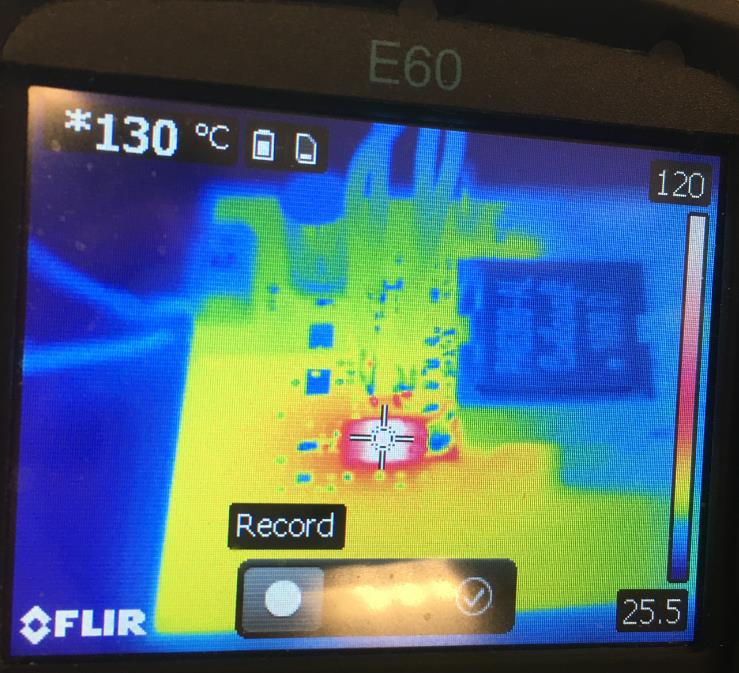SLVAEE5 June 2020 TPS23754
3 Thermal Challenge During an Output Short
When the output is short, the PWM controller will clamp input current to do Pin limit. At output side, the output peak fault current is increasing while output voltage is decreasing until the voltage on AUX winding, which is reflected from 2ed output winding, to hit UVLO of VC, causing PWM pulse stop. Therefore, the internal current source will be enabled again to recharge the external Cvc until achieving 15V,typ, turning off internal current source and starting new PWM pulse. If the short circuit fault still exists, the power converter will repeat the cycle above until fault goes away. The hiccup OCP behavior could be observed at output short circuit condition.
The challenge is that before PWM stop switching, the output peak fault current will keep rising to a pretty high level. The worst case occurs at lower Vout condition such as 5Vout/5A AT power level. During the period of short circuit condition, the peak fault current will pass through the Synchronous FET or Rectifying Diode on the secondary, causing its temperature to increase. In some conditions, its surface temperature can exceed 130C at 25C ambient condition. The waveform is shown in Figure 5 and the thermal picture is shown in Figure 6.
 Figure 5. The original hiccup OCP waveform
Figure 5. The original hiccup OCP waveform  Figure 6. IR thermal photo with original hiccup OCP mode
Figure 6. IR thermal photo with original hiccup OCP mode